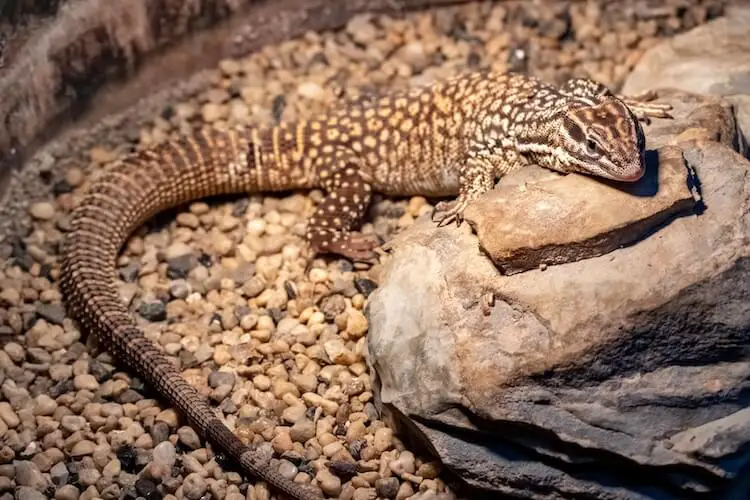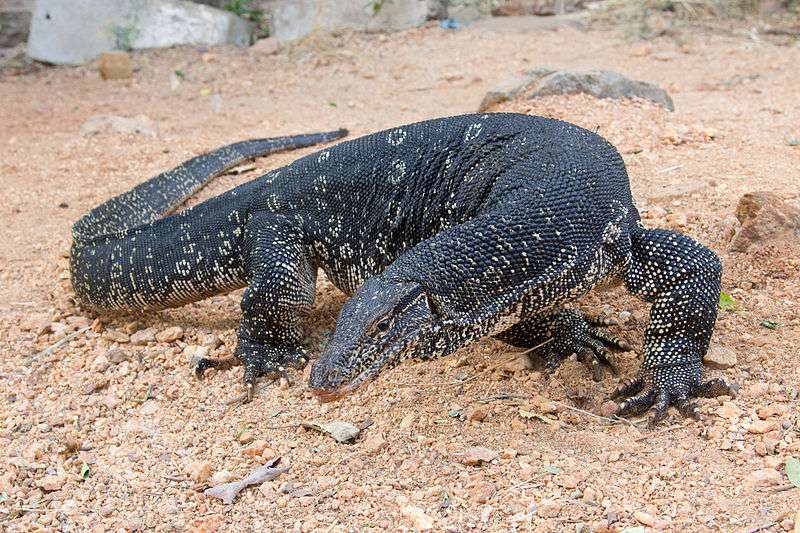
Description
Scientific Name: Varanus bengalensis
Life span: 22 years
The Bengal monitor commonly known as the common Indian monitor is a monitor lizard that lives mostly on land. Its length ranges from around 61 to 175 cm. With a ventral patterning of crossbars ranging in coloration from gray to black from the snout to the tail, adult Bengal monitors are typically gray – greenish-gray in appearance. In general, these marks are lighter in the eastern and darker in the western portions of the geographical distribution. With time, the ground tone darkens and the ventral patterns grow lighter. As a result, compared to younger Bengal monitors, adults have a less prominent, less contrasted pattern. It has a forked tongue.
Native Region/Habitat
The Bengal monitor lizard spans from Iran to Java and is one of the most widely dispersed monitor lizards due to its eurytopic nature and adaptability to a variety of environments. River valleys of Afghanistan, eastern Iran, Pakistan, Bangladesh, Sri Lanka, Nepal, and Burma are home to it.

Behavior
Bengal monitors are mostly solitary and reside on the ground, while young individuals are sometimes spotted on trees. Bengal monitors find refuge in the cracks and holes they create in rocks and constructions. The majority of the day is spent moving around constantly looking for food. During the peak breeding season, when males fight for mates, Bengal monitors are more likely to communicate with one another.
Bengal monitors can sprint faster and further than most other reptiles, and they utilize this speed to hunt for food that includes snakes, rodents, birds, lizards, and anything else they possibly outrun. They do, however, frequently eat carcasses that they stumble upon.
Care As a pet/In captivity
There aren’t many species that have sparked as much folklore as the Bengal monitor lizard. This animal is surrounded by superstition. Some erroneously think that eating its meat would give them superpowers and masculinity, while others absurdly assert that it can attack and kill livestock. If only the Bengal monitor lizard’s numbers weren’t being devastated by unfounded myths and beliefs, it may be a beneficial partner in human-dominated environments.
Table





